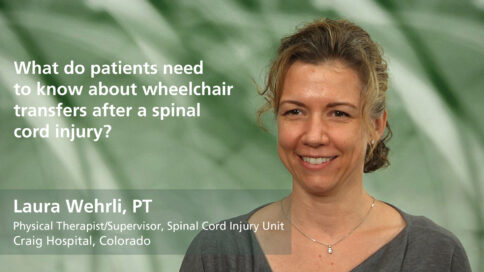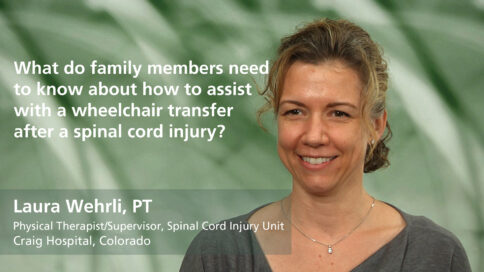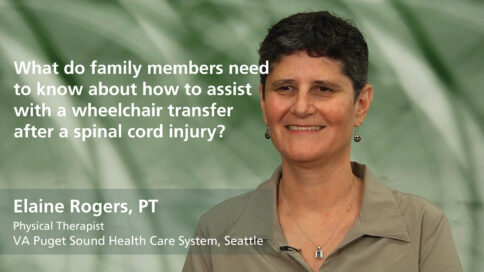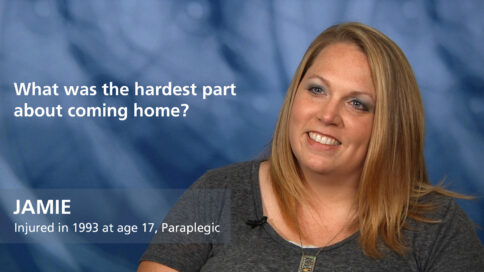What are some options for making transfers at home? - Kim Eberhardt Muir, MS
|
|
What are some options for making transfers at home? |
|
Kim Eberhardt Muir, MSProgram Specialist, Spinal Cord Injury Program, Rehabilitation Institute of Chicago |
||
| Read Bio | More Videos by Kim Eberhardt Muir | |
|
Share |
||
Transcript
It depends on your functional level, obviously a person that’s a higher- level injury may invest in a ceiling-lift type of system, which does make things a lot easier. Barrier-free systems, they use a sling, and also makes it easier for a caregiver. Now, if that person is alone and doing transfers, some people can actually set themselves up with one of those—if the sling is already underneath them, or positioned in a way that they can just put the straps, and fasten it on, and press the button, and hoist themselves into their wheelchair. Otherwise, we’ll use a sliding board a lot of times. It’s a safe option if a person is still a little bit unsure of their transfer skills when they go home. It creates kind of a bridge to the bed, or to the wheelchair, wherever you’re going. The one thing to think about with transfers is, you never want to use one of those with bare skin. So if you’re transferring to a shower chair with a sliding board, you want to make sure there’s a pillowcase on that, or some towel, or what we call “chucks,” which is kind of something you use for bowel care. It will help you slide a little easier, and you’ll protect your skin for that purpose. You got to make sure though with transfers that you look at your skin. If you’re really dragging or shearing, you’re probably someone that needs to use a sliding board, or perhaps a lift until you can get a little bit better. And, also make sure those wheelchair locks are on, and also your bed locks, it very important, if you’re alone, especially.
Show Less|
|
||
add
What are some options for making transfers at home? |
||
Kim Eberhardt Muir, MSProgram Specialist, Spinal Cord Injury Program, Rehabilitation Institute of Chicago |
More Videos by Kim Eberhardt Muir | |
| Transcriptadd | share | |
It depends on your functional level, obviously a person that’s a higher- level injury may invest in a ceiling-lift type of system, which does make things a lot easier. Barrier-free systems, they use a sling, and also makes it easier for a caregiver. Now, if that person is alone and doing transfers, some people can actually set themselves up with one of those—if the sling is already underneath them, or positioned in a way that they can just put the straps, and fasten it on, and press the button, and hoist themselves into their wheelchair. Otherwise, we’ll use a sliding board a lot of times. It’s a safe option if a person is still a little bit unsure of their transfer skills when they go home. It creates kind of a bridge to the bed, or to the wheelchair, wherever you’re going. The one thing to think about with transfers is, you never want to use one of those with bare skin. So if you’re transferring to a shower chair with a sliding board, you want to make sure there’s a pillowcase on that, or some towel, or what we call “chucks,” which is kind of something you use for bowel care. It will help you slide a little easier, and you’ll protect your skin for that purpose. You got to make sure though with transfers that you look at your skin. If you’re really dragging or shearing, you’re probably someone that needs to use a sliding board, or perhaps a lift until you can get a little bit better. And, also make sure those wheelchair locks are on, and also your bed locks, it very important, if you’re alone, especially.











































